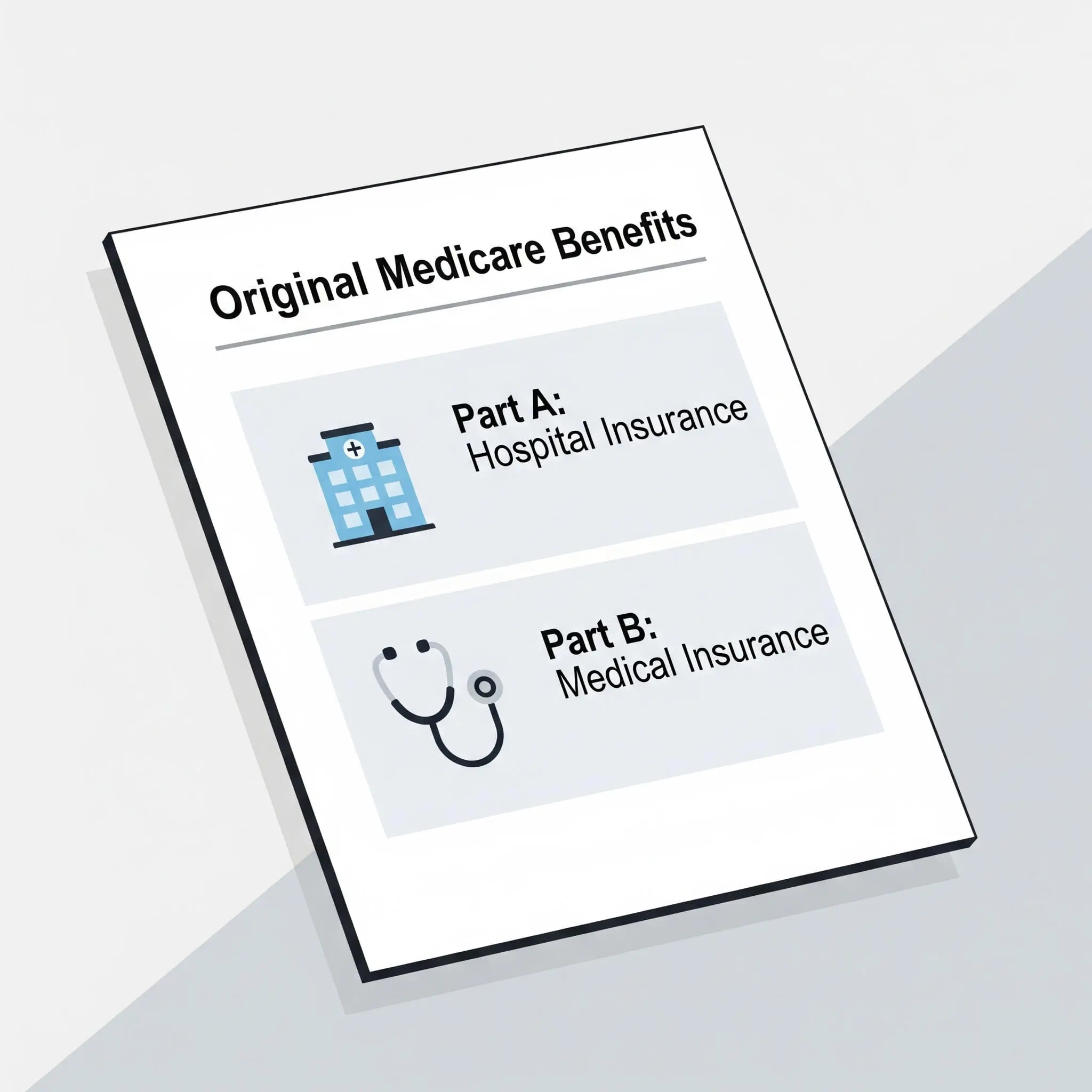Original Medicare – the foundation of your coverage
What is Original Medicare?
Your Simple Guide to Parts A & B
Understanding Medicare Part A & Part B Coverage

What is Original medicare?
Original Medicare is the foundation of Medicare coverage, consisting of Part A (Hospital Insurance) and Part B (Medical Insurance). Together, these two parts provide essential healthcare coverage for Medicare beneficiaries, covering hospital stays, doctor visits, and many medical services. Understanding how Original Medicare works is crucial for making informed healthcare decisions and managing your Medicare benefits effectively.
The Two Parts of Original Medicare
Part A: Hospital Insurance
Medicare Part A covers inpatient hospital stays, skilled nursing facility care, hospice care, and some home health services. Most people get Part A premium-free if they or their spouse paid Medicare taxes while working.
Part A generally helps cover:
Part B: Medical Insurance
Medicare Part B covers doctor visits, outpatient services, medical equipment, and preventive services. Part B requires a monthly premium and has an annual deductible that beneficiaries must meet.
Part B generally helps cover:
Original Medicare Eligibility Requirements
Age 65 or Older
You’re eligible for Medicare when you turn 65, regardless of your work status. You can apply during your Initial Enrollment Period, which begins 3 months before your 65th birthday and ends 3 months after your 65th birthday month for a total of 7 months.
Disability Benefits
Generally, you can become eligible for Medicare due to disability if you’ve been receiving Social Security Disability Insurance (SSDI) benefits for 24 months. There’s a two-year waiting period that starts the first month you receive SSDI benefits. After those 24 months, you’re automatically enrolled in Medicare.
End-Stage Renal Disease (ESRD)
You can be eligible for Medicare at any age if you have End-Stage Renal Disease (ESRD), which is permanent kidney failure that requires regular dialysis or a kidney transplant. In most cases, you will need to manually sign up for Medicare, as enrollment is not always automatic. The date your coverage starts can depend on when you begin dialysis or when you have your transplant.
Lou Gehrig’s Disease (ALS)
If you have Amyotrophic Lateral Sclerosis (ALS), also known as Lou Gehrig’s Disease, you are eligible for Medicare regardless of your age. Unlike other disabilities that have a 24-month waiting period, if you have ALS, you will get Medicare Part A and Part B automatically the very same month your Social Security disability benefits begin.
2025 Original Medicare Costs
Part A Premium
$0
Most people pay no premium for Part A if they or their spouse paid Medicare taxes for at least 10 years
Part A Deductible
$1,676
Per benefit period for inpatient hospital stays
Part B Premium
$185.00
Standard monthly premium
(higher earners pay more – see IRMAA)
Part B Deductible
$257.00
Annual deductible you must meet before Medicare pays
Important Coverage Gaps
While Original Medicare provides a strong foundation for your health coverage, it’s important to know that it doesn’t cover everything. Understanding these “gaps” is the first step in deciding if you need additional coverage.
CHOOSING YOUR PATH
How to Address the Gaps in Original Medicare
After seeing what Original Medicare does and doesn’t cover, most people decide they need additional coverage for more complete protection. There are two main ways to do this, and your choice will shape how you receive your healthcare.
Add a Medigap Plan
You can stick with Original Medicare and add a Medicare Supplement (Medigap) policy to help pay for out-of-pocket costs like deductibles and coinsurance. You will also need to add a separate Part D plan for prescriptions.
Choose a Medicare Advantage Plan
Part B is your medical insurance for doctor’s services and outpatient care. It covers a wide range of services to keep you healthy.

